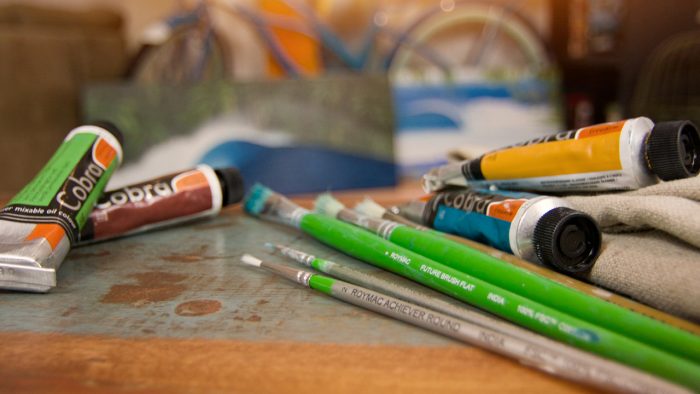Transforming your art to become an eco-friendly artist can be quite hard. It’s a human tendency to pass on a legacy through art. Artists would do anything to create a masterpiece that lives on forever. At the same time, a lot of toxic mess is left behind in our environment. However, it doesn’t have to be this way.
You can always craft something without hurting the environment. If you’re a nature lover, chances are you’ve already heard of Ecological Art. It is a contemporary art form created by artists who are worried about nature.
So, if you’re an artist who wants to go green, you’ve landed in the right place. In this post, we’ll share some ways that will help creative souls produce artwork in a sustainable manner.
Buy Eco Friendly Supplies
You will need the light in your studio space no matter the medium. While natural light is the best option, but it is something that you have no control over. Technology is ever-changing. Recent advancements have helped to make more energy efficient and eco-friendly light bulbs such as CFLs, LEDs etc. They consume less power and run brighter for a very long time.
When it comes to choosing art supplies, go with the nature-friendly stuff. Choose the supplies which are made up of recycled materials. Be it the canvas, paper, or even the board that you’re working on. Color pencils are environmentally friendly. Faber Castell colored pencils are great for sketching and they can also help reduce the waste being created.
A lot of companies these days are concerned about protecting the environment. Therefore, you should go with green supply companies.
Dispose Toxic Waste Properly
Another important tip is to dispose of toxic waste properly. If you’re using colors which contain lead and other poisons, the sludge will be toxic and harmful. This requires special attention. You should dispose of this waste at a hazardous waste facility. Contact local recycling authorities and they will take care of the rest.
Many artists have this misconception that once the paint is dried, it poses no threats to the environment. If you feel the same, you cannot be more wrong. When dumped in the soil, the microorganisms break down and the dried paint film then winds up the food chain.
Buy Conservatively
One of the leading causes of waste creation is the excessive buying of materials. After deciding the materials you’re going to use, make sure you buy conservatively. Buy enough materials to complete your project. The best way is to plan ahead and analyze how much material would you need.
Remember if you ever run out of paint, you can always buy more. However, if you have bought it in excess, it will dry up and go in waste. Chances are you’ll have some leftover material even if you plan things perfectly. In that case, be sure to reuse the materials. For example, you are left with acrylic paint; in order to save it, you should pack it properly under plastic wrap.
Conserve Paper
Artists should try to conserve paper. Cut down on paper and try to recycle it as much as possible. You can use papers with one side used. Moreover, you should try to save the paper with one side used. And whenever you need to get something printed, you can utilize the unused side of the paper.
Recycling used paper can really help save the environment. It’s a common practice among many businesses and people who are concerned about our nature.
Recycle Containers
You’ve used all your color and now all you are left with are empty jars. What do you plan to do with these empty boxes, jars, and containers? Well, most of these products can be recycled. Check these materials for labels to check if you can recycle them or not. If you see a triangular sign, then it can be recycled. Waste disposal authorities will collect these items on a designated date of the month.
Read The Warning Labels
One of the best things you can do is read the warning label on your supplies. Always choose the products which do not contain toxic substances. Many of the art supplies contain harmful substances which can cause reactions when inhaled or during skin contact with the skin.
These substances are not only harmful to humans, but they are also dangerous for plants and animals. Avoid the use of supplies which contain toxic materials. By limiting the use of these materials, you can help save the environment.
Following these tips, you can become an eco-friendly artist and help save our planet.







Read 1 comment and reply